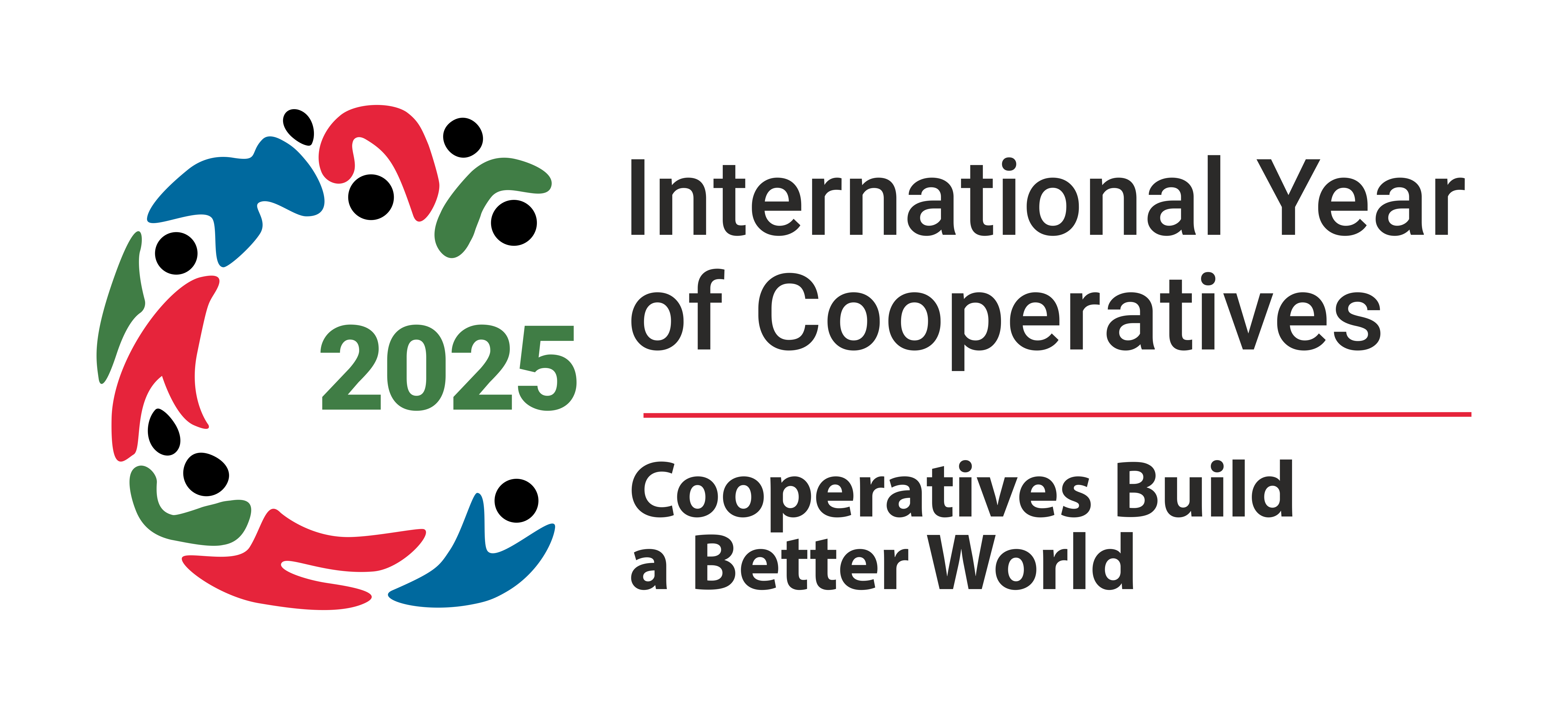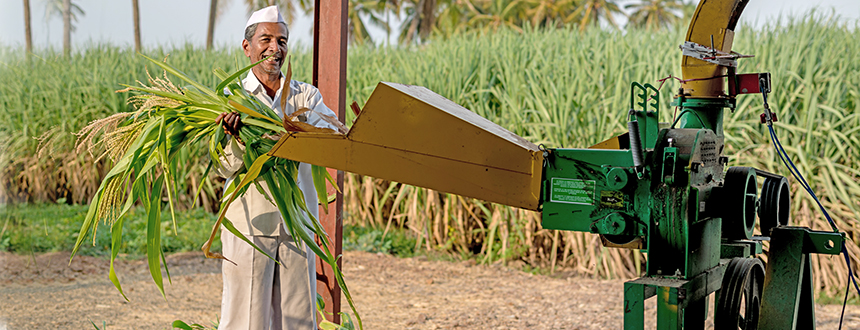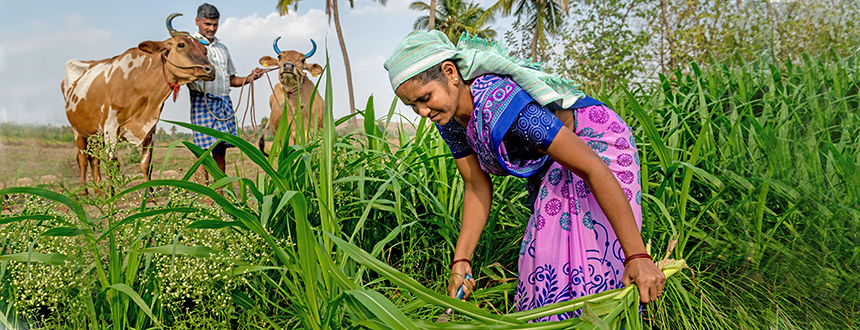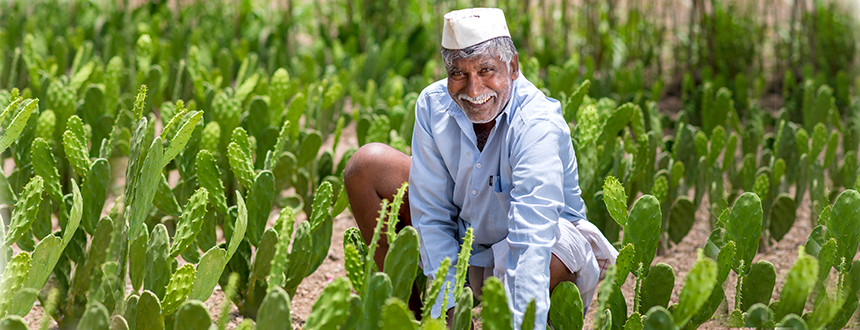Green Fodder Production and Conservation
The chronic problem of deficit of green fodder in India can be addressed through the adoption of improved fodder production and conservation technologies which will increase the production and availability of green fodder in terms of both quality and quantity.
A three-pronged approach has been adopted in the area of Fodder Development:
- Initiatives in the area of‘'Fodder seed production enhancement’
- Development and popularisation of‘'Green Fodder Production Technologies’
- Introduction of suitable techniques for fodder conservation and development of innovative models
NDDB demonstrates cultivation of improved varieties of fodder crops viz. cereals (maize, sorghum, pearl millet, oats, barley, triticale, teosinte, job’s tear), legumes (lucerne, berseem, cowpea, guar, rice bean, velvet bean), perennial grasses (bajra napier hybrid, guinea grass, setaria, cenchrus, marvel, rhodes, para grass) and perennial pasture legume (hedge lucerne, clitoria, stylo) and fodder trees (sheveri, gliricidia, augusthi, drum stick, chaya) to farmers / trainees visiting the Fodder Demonstration unit (FDU). Regular training programmes on fodder production and conservation technologies are being conducted for exposure of fodder officers and field staff from different milk unions for fodder development purpose.




